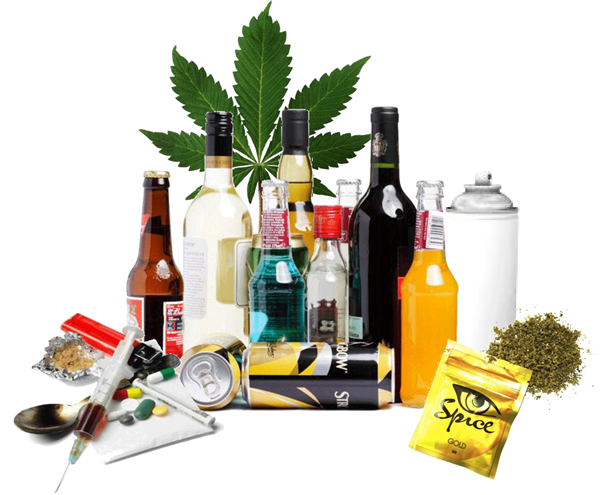Lesson 11: Substance Related Addictive, and Impulse-Control Disorders
Attention

Learning Outcomes
Upon completion of this lesson's material, students will be able to:
- Correctly diagnose a case with either substance-dependency or substance-abuse
- Discuss etiology and treatment options of substance-related disorders.
- Discuss the basic assumptions and philosophies of Alcoholics Anonymous.
- Review resources related to inpatient treatment for substace use disorders.
Teaching
Chapter 11: Substance-Related, Addictive, and Impulse-Control Disorders
Bill, a married, 27-year-old accountant came to see me at the insistence of his wife (Sheri). She was under the impression that he was having an affair and wanted him to set up marriage counseling for them. Apparently, as she was early in pregnancy with their fifth child (Mormon couple), she went to the bank to withdraw some cash from savings to purchase a new crib at a yard sale she had been to. At the bank, the teller told her that the savings balance was approximately five dollars. Sheri thought that there must be some mistake. The last statement that she saw showed a balance of over ten thousand dollars! Even though this was five or six months ago, she was sure that there would be more than only five dollars. When the balance was confirmed, Sheri called Bill to find out if he had moved the money somewhere else. After a long silence, Bill said that he had not moved the money. He started to cry and told her that he was having an affair with a woman at work. The money had been spent on hotels and other items to keep this a secret. Sheri was devastated and insisted that he end the affair immediately. Now, she understood why he was so secretive and angry all of the time. Bill agreed to do so and go to marriage therapy.
When Bill arrived at my office, (when conducted marriage counseling, it is common to interview each person in the couple separately) I began the interview. Bill stood about six-foot, two-inches and looked to weigh about 165 pounds. He stated that the combined stress of work and the affair had significantly diminished his appetite. Apparently, he had not been eating much. When asked about the dark circles under his eyes, he said that he hadn’t been sleep well either. His was taking Ambien (a sleeping medication) and Ativan (an antianxiety medication) to help his sleep. Bill presented well-groomed and dressed nicely, but, appeared to be much older than his stated age. In addition, right from the start, I noticed that he was fidgeting excessively in his chair. As he sat cross-legged, I could see that his foot was jerking quickly up and down. He also frequently shifted his weight from side to side in. Finally, he stood up and walked around the office while we talked. As this is fairly atypical behavior for a patient to exhibit; especially on the first session, I was intrigued. At first, I chalked all of this up to anxiety. However, after about thirty minutes into the session, he began to move the curtains aside and kept looking out the window. When I pointed the behavior out, he sat down. After a few more minutes, he was up and looking out the window again. At that point, he turned around and said, “I think that the FBI knows I am here.”
Suffice it to say, I was a bit taken aback. Bill went on to explain that he had been followed to the office by an unmarked car. When he became a bit more agitated, I instructed him to close the curtains completely and sit back down. He did so. At that point, I asked him how long he had been using. He looked shocked at the question and remained quiet. I explained to him that the FBI had been to my office many times; usually with someone on a major stimulant. After a couple of minutes, he looked up at me and said, “Help me.” By the end of the interview, I had discovered that Bill was using about an “eight-ball” (one-eighth of an ounce) per day. This extremely large amount of cocaine costs around 175 dollars. I also found out that he was not having an affair with anyone. He lied to his wife to protect his real love, cocaine. He was having an affair, but, it was with a powder.
Please note that this resources is from DSM-IV
CLASS ACTIVITIES
Lesson 11 Assignment - Case Study
Open the Case Study labeled “Phama Jo.” You have a case and a series of questions to answer.
Click here to download the Case Study
Lesson 11 Discussion A
Read the entire Alcoholics Anonymous (AA) pamphlet that I posted for you. Give me your reactions to what you read. I am particularly interested in your reactions to the idea that once an alcoholic (alcohol dependency) always an alcoholic. Have you or someone you know had any experience with AA or Narcotics Anonymous (NA)?
Lesson 11 Discussion B
Go to the web and find a site that deals with “inpatient” treatment for chemical dependency (search rehab, alcoholism treatment, chemical dependency treatment, or something similar). Could you find their “success rates?” What did you think about the treatment center? What are you reactions to the type of treatment they offer? Could you find a cost? Please be specific.